Endpoint privilege management (EPM) plays a key role in small business cybersecurity as it encourages business owners, IT staff, and IT consultants to monitor and set the appropriate account privileges for users accessing the business’ network. Rather than allowing every user to have access to all network data or simply using default privileges that give users more access than they need, EPM approaches can help a business ensure privilege escalation is warranted and that the received privileges are what an end user needs to perform their duties and access needed information or applications. Implementing EPM into your business can help keep endpoints more organized, lower the risk of accidental data loss, and help defend against cyberattacks.
What is Endpoint Privilege Management?

Endpoint privilege management involves both managing user privileges on the network and implementing the services necessary to monitor and change those privileges as needed. An IT team or consultant should be able to change the account status of end users without disrupting their workflows or requiring them to jump through hoops. Additionally, the available privileges of each employee should be monitored to catch suspicious activity occurring on the network, which can help stop cyberattacks early. EPM is also the best way to implement the principle of least privilege into your business, which can improve your small business’ ability to respond to network threats.
Endpoint Privilege Management Defends SMBs

Small businesses that utilize endpoint privilege management improve their cybersecurity posture with multiple benefits, such as containing threats on the network, protecting access to sensitive applications, and controlling user access to data. Hackers are always looking for access to accounts with escalated privileges that will allow them to spread malware laterally, so maintaining the principle of least privilege with EPM decreases the number of appealing targets on your network. EPM solutions also allow users to be given access to sensitive applications or data only when they require it to do work, which can help old privileges avoid being exploited if a user’s account is compromised.
Implementing EPM in Your Business

EPM shouldn’t be a manual process for businesses, and SMBs have options when it comes to the endpoint privilege management software they want to use. The best solutions will allow individual employees to be given access to applications and data without unilaterally elevating all of their privileges and blocking the use of applications that have not been authorized by the IT team or IT consultant. Each business’ IT environment is unique, so our team recommends SMBs work with their local small business IT consultant to determine the best EPM software for their situation.
Summary
Endpoint privilege management must be a high priority for small and medium businesses because a single account with improper privileges can pose an enormous threat to the network. By monitoring and adjusting user privileges as needed, your small business’ network can ensure it adheres to the principle of least privilege and lowers the risk of a cyberattack as much as possible. The security experts here at Robinett Consulting understand that finding and deploying the right EPM solution can present challenges for small businesses, so we want to offer a complimentary consultation to your business today, so we can help find the right solution to meet your needs and budget!




